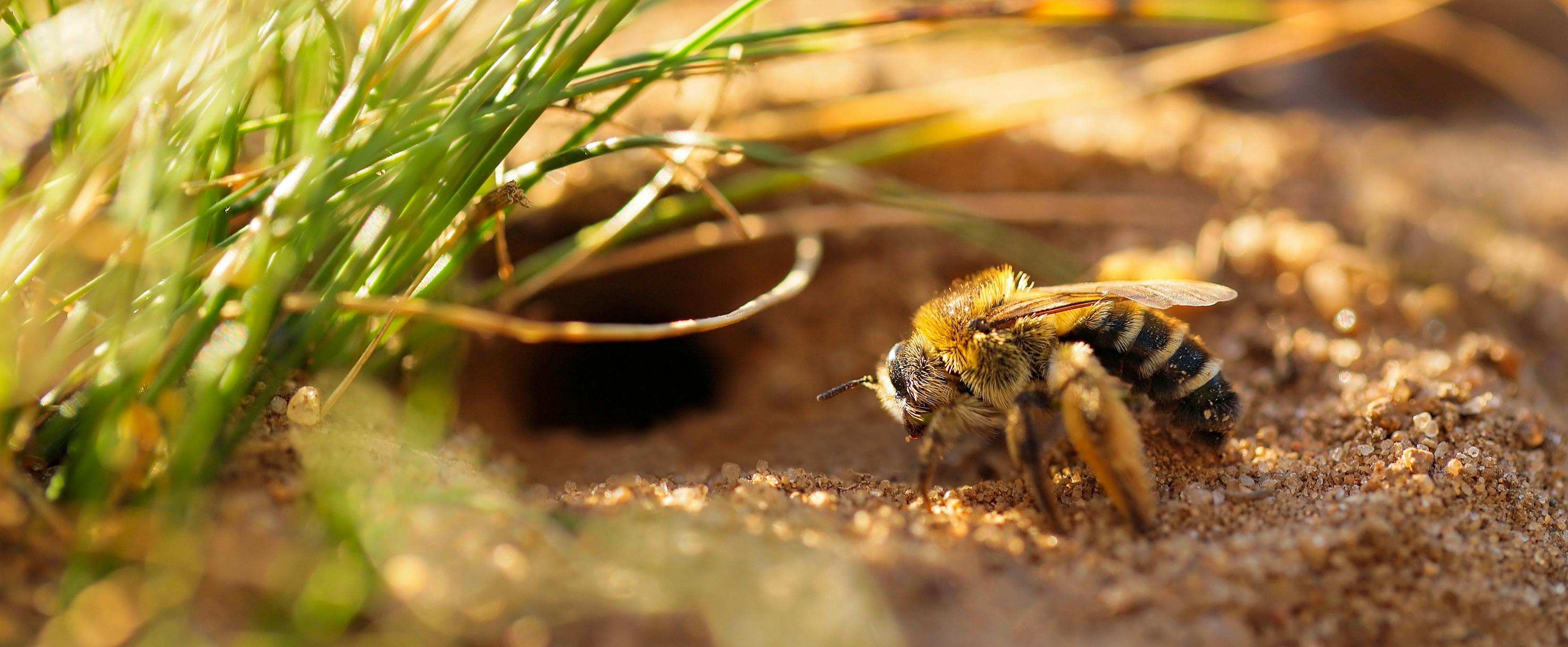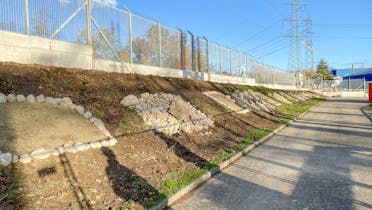
At first glance, power lines and substations do not necessarily appear to be a haven for biodiversity. But with their sandy and stony open spaces, many provide the perfect conditions for endangered animal and plant species to thrive. This benefits multiple native wild bee species, for example. They build their own tunnels in the soil to breed in, and are dependent on sandy soils in sunny locations. Often, simply waiting a little longer before mowing the grass is enough to help these habitats to flourish and to ensure that their flora is available as a source of food.
The underestimated wild bee
Wild bees lead a shadowy existence in relation to honey bees. There are more than 16,000 bee species worldwide, more than 600 of which can also be found in Switzerland. Many people are unaware of the vastness of the species. This is due to the fact that wild bees are not used for honey production.
What is more, as most wild bees live as solitary breeders, they are less noticeable than honey bees, which form colonies. In their short lifetime, wild bees build a nest, care for their larvae and usually demonstrate a preference for one particular plant species. Over a third of the bee species in Switzerland collect pollen exclusively from one plant species or genus. They can only exist in areas where the right type of flowers are in abundance.
«To stop the decline in the wild bee population, we need to create as many habitats as possible with a wide variety of plants and nesting possibilities.»
Jeannine Suremann
Beneficial for biodiversity
Rough pastures are home to numerous plant species, making them an ideal habitat, but areas of this kind have become rare in Switzerland. The diversity and incidence of wild bee species and of other insects has decreased significantly due to the loss of food and nesting possibilities. However, wild bees play a key role in biodiversity because they allow both wild and cultivated plants to reproduce.
One of the measures taken by Swissgrid is to prevent areas of grassland such as rough pastures around power lines and near substations from being mown until the second half of June or after the flowers have bloomed. Mowing the grass later in the year and less frequently can help to develop a habitat that offers sufficient food and places of refuge.
Where necessary, measures are taken to prevent the land from becoming overgrown with scrub. Piles of sand and stones are protected or strengthened so that wild bees can find sufficient nesting sites. Ballast stones and genuine cairns are also suitable for this purpose, besides providing a home for weasels and other larger species.
Jeannine Suremann works as a Grid Project Engineer with focus on the environment at Swissgrid. In this role, she accompanies grid construction projects on the topic of the environment and deals with the environmental conformity of lines and substations as well as biodiversity and species promotion. Jeannine Suremann has a Master's degree in Geography from the University of Zurich.





